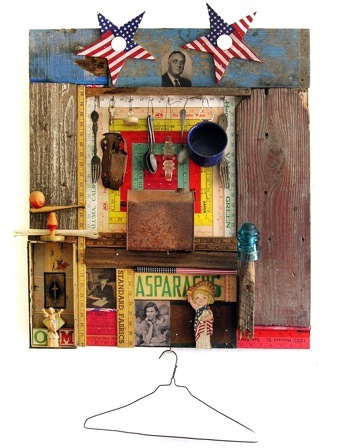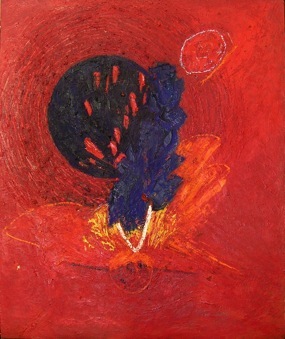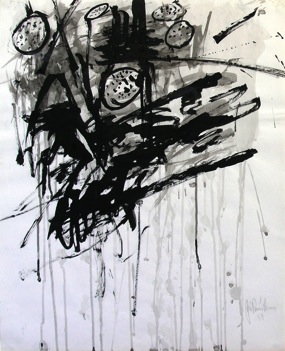
Founded in 1871, the San Francisco Art Institute (SFAI) is one of the U.S.’s older and more prestigious schools of higher education in contemporary art. It boasts an illustrious list of alumni in all of its areas of focus. But most important, it has consistently held fast to its core philosophy of creating programs where creativity and critical thinking are fostered in one of the most open, innovative, and interdisciplinary environments in higher education. SFAI focuses on educating artists who will become the creative leaders of their generation.
Notable former faculty includes landscape photographer Ansel Adams who founded the photography department in 1945. Notable Alumni includes Richard Diebenkorn, Enrique Chagoya, Jerry Garcia, Don Ed Hardy, Annie Leibovitz and Manuel Neri, among others.
THE BEGININGS
The San Francisco Art Association (SFAA) was founded in 1871 and it opened the San Francisco School of Design in February 1874. Founded by artists, writers, and community leaders who possessed a cultural vision for the West, the (SFAA) became a locus for artists and thinkers. In 1893 the name was changed to California School of Design and the association affiliated with the University of California and inherited the mansion of Mark Hopkins on Nob Hill. The fire following the 1906 San Francisco earthquake destroyed both the mansion and the school. A year later, the school was rebuilt on the site of the old mansion and renamed the San Francisco Institute of Art.
In 1916 the SFAA merged with the San Francisco Society of Artists and assumed directorship of the San Francisco Museum of Modern Art, then located in the Palace of Fine Arts, a relic of the Panama-Pacific International Exposition. The school was also renamed the California School of Fine Arts (CSFA). In 1926 the school moved to its present location at 800 Chestnut Street in San Francisco. In 1961 the school took its modern name, the San Francisco Art Institute.
DIEGO RIVERA VISIT
In 1930 Mexican muralist Diego Rivera arrived in San Francisco, invited by William Gerstle, the president of SFAA, to paint a fresco at the school’s new campus on Chestnut Street. Rivera’s arrival sparked intense debate in the city over a number of political, social, and artistic issues.
A NUCLEUS OF ABSTRACT EXPRESSIONISM
After 1945, the school became a nucleus for Abstract Expressionism. New York artists Clyfford Still, Ad Reinhardt, and Mark Rothko taught here, along with David Park, Elmer Bischoff, Nathan Oliveira, and others. Although painting and sculpture were the dominant mediums for many years, photography had also been among the course offerings. In 1946, Ansel Adams and Minor White established the first fine art photography department in the US.
In 1949, an international conference, The Western Roundtable on Modern Art, was organized by CSFA Director Douglas McAgy, and included Marcel Duchamp, Frank Lloyd Wright, and Gregory Bateson, among others. The object of the roundtable was to expose “hidden assumptions” and to frame new questions about art.
BAY AREA MOVEMENTS
By the early 1950s, San Francisco’s North Beach was the West Coast center of the Beat Movement, and music, poetry, and discourse were an intrinsic part of artists’ lives. CSFA faculty Park, Bischoff, James Weeks, and Richard Diebenkorn were now the leaders of the new Bay Area Figurative Movement informed by their experience of seeing local museum exhibitions of work by Edvard Munch, Degas, and Toulouse-Lautrec. A distinctly Californian modern art emerged—a fusion of abstraction, figuration, narrative, and jazz—in their work as well as that of their students, including William T. Wiley, Robert Hudson, William Allan, Joan Brown, Manuel Neri, Carlos Villa, and Fred Martin. The students’ interest in new ideas and new materials became the core of the Funk Movement.
Installation art, video, music, and social activism continued to inform much of the work of faculty and students in the 1970s and ’80s. SFAI was at the forefront of recognizing an expanded vocabulary of art making that was no longer based on mediums, but was a hybrid of many practices.
REALM OF INFLUENCE
The accomplishments of SFAI’s faculty and alumni can be found in museums and galleries around the world, in libraries and bookstores, in movie theaters, on the Web, on television, on the streets, and elsewhere. SFAI alumni, like José Ramón Lerma, continue to investigate and further define contemporary art and the role of artists in today’s global society.
The majority of the content is this article and its links are from wikipedia and from SFAI website.
JOSE RAMON LERMA








TEL: 415.441.8680

Contents Copyright © 2003-2009






José Ramón Lerma, Nudes,
1954, drawings, 11” x 10”
SAN FRANCISCO ART INSTITUTE
José Ramón Lerma, The Dawn,
1963-64, oil on canvas, 38” x 32”
José Ramón Lerma, Landscape,
1959, ink on paper, 11” x 9”
José Ramón Lerma,
John Steinbeck,’s The Grapes of Wrath,
2008, assemblage presented at
Banned and Recovered Exhibition







RECENT REVIEWS





